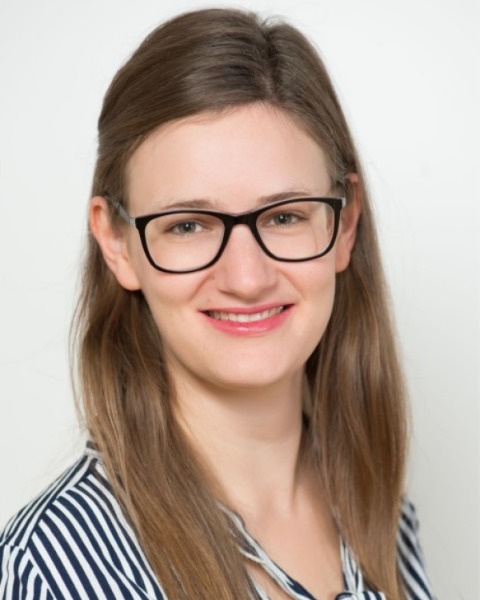Pregnancy and Lactation
Session: Poster Session C
(098) Exposure to teratogens in pregnancy and in women of childbearing age between 2015 and 2021 in Switzerland: A retrospective analysis of Swiss healthcare claims data
Sunday, August 27, 2023
8:00 AM - 1:30 PM ADT
Location: Convention Hall
Publication Number: 1093

Carole Anna Marxer, PhD (she/her/hers)
Postdoc
University Hospital Basel (Hospital Pharmacy)
Basel, Switzerland
Presenting Author(s)
Background: Exposure to teratogens during pregnancy and by women of childbearing age in Switzerland is unknown.
Objectives: To evaluate the exposure to teratogens during pregnancy and by women of childbearing age in outpatient care in Switzerland.
Methods: We conducted a retrospective descriptive study using anonymized healthcare claims data of one of the biggest health insurance companies in Switzerland, the insurance group Helsana. We quantified the prevalence of exposure to weak, proven, and unequivocally potent teratogens in women of childbearing age (2021) and in pregnant women during trimester 1 (T1) and during a 9-month period before the estimated date of the last menstrual period (2015-2021). Results were weighted based on the demographic distribution of the Helsana population relative to the Swiss population and were compared to Germany (2020).
Results: We identified a weighted pregnancy population of 502’100 pregnancies (median maternal age=32 years, IQR=28-35) and 1’413’519 women of childbearing age (median age=33, IQR=25-41). In total, 14.41% (vs. 7.80% in Germany) of women of childbearing age were exposed to ≥1 potentially teratogenic drug. Of these, 11.54% were weak teratogens (Germany: 6.80%) of which 9.52% were systemic glucocorticoids (Germany: 4.60%); 1.20% were proven teratogens (Germany: 0.80%), and 2.51% were unequivocally potent teratogens (Germany: 0.60%). Before pregnancy and during T1, women were less frequently exposed to teratogens (before pregnancy: 7.01%, T1: 1.34%). The percentage of women exposed to unequivocally potent teratogens was similar in T1 in Switzerland (0.04%) and Germany (0.03%), but the number of women exposed to weak and proven teratogens was higher in Switzerland (1.20% vs. 0.92% resp. 0.10% vs. 0.05%). In women of childbearing age in Switzerland, the overall exposure to teratogens increased with age ( < 26 years: 12.24%, ≥36 years: 16.81%), but unequivocally potent teratogens were most frequently used in those < 26 years of age (4.09% vs. < 2% in other age groups). Among these, exposure to systemic retinoids was most frequent (4.71%), followed by valproate (0.19%, similar in Germany). Exposure to valproate decreased in T1 (1.1/10‘000) and after the introduction of a pregnancy prevention program in 2018 (0.9-1.1/10’000 in 2019-2020 vs. 1.9-4.1/10’000 in 2016-2018).
Conclusions: The majority of women in Switzerland stop teratogenic drugs before pregnancy, which demonstrates awareness of the teratogenic potential of those drugs. However, the exposure to teratogens in women of childbearing age and during T1 was higher in Switzerland than in Germany. Further investigation is needed to determine whether safer drug treatment is available for the given indications.
Objectives: To evaluate the exposure to teratogens during pregnancy and by women of childbearing age in outpatient care in Switzerland.
Methods: We conducted a retrospective descriptive study using anonymized healthcare claims data of one of the biggest health insurance companies in Switzerland, the insurance group Helsana. We quantified the prevalence of exposure to weak, proven, and unequivocally potent teratogens in women of childbearing age (2021) and in pregnant women during trimester 1 (T1) and during a 9-month period before the estimated date of the last menstrual period (2015-2021). Results were weighted based on the demographic distribution of the Helsana population relative to the Swiss population and were compared to Germany (2020).
Results: We identified a weighted pregnancy population of 502’100 pregnancies (median maternal age=32 years, IQR=28-35) and 1’413’519 women of childbearing age (median age=33, IQR=25-41). In total, 14.41% (vs. 7.80% in Germany) of women of childbearing age were exposed to ≥1 potentially teratogenic drug. Of these, 11.54% were weak teratogens (Germany: 6.80%) of which 9.52% were systemic glucocorticoids (Germany: 4.60%); 1.20% were proven teratogens (Germany: 0.80%), and 2.51% were unequivocally potent teratogens (Germany: 0.60%). Before pregnancy and during T1, women were less frequently exposed to teratogens (before pregnancy: 7.01%, T1: 1.34%). The percentage of women exposed to unequivocally potent teratogens was similar in T1 in Switzerland (0.04%) and Germany (0.03%), but the number of women exposed to weak and proven teratogens was higher in Switzerland (1.20% vs. 0.92% resp. 0.10% vs. 0.05%). In women of childbearing age in Switzerland, the overall exposure to teratogens increased with age ( < 26 years: 12.24%, ≥36 years: 16.81%), but unequivocally potent teratogens were most frequently used in those < 26 years of age (4.09% vs. < 2% in other age groups). Among these, exposure to systemic retinoids was most frequent (4.71%), followed by valproate (0.19%, similar in Germany). Exposure to valproate decreased in T1 (1.1/10‘000) and after the introduction of a pregnancy prevention program in 2018 (0.9-1.1/10’000 in 2019-2020 vs. 1.9-4.1/10’000 in 2016-2018).
Conclusions: The majority of women in Switzerland stop teratogenic drugs before pregnancy, which demonstrates awareness of the teratogenic potential of those drugs. However, the exposure to teratogens in women of childbearing age and during T1 was higher in Switzerland than in Germany. Further investigation is needed to determine whether safer drug treatment is available for the given indications.

